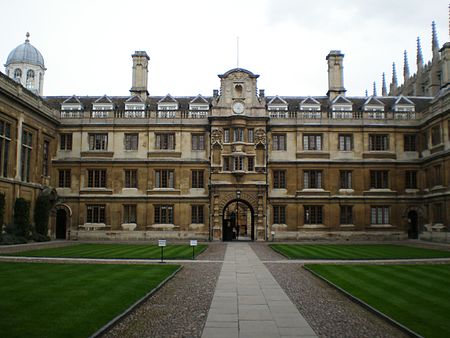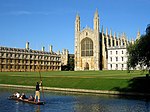Clare College, Cambridge
1326 establishments in EnglandClare College, CambridgeColleges of the University of CambridgeEducational institutions established in the 14th centuryGrade I listed buildings in Cambridge ... and 2 more
Grade I listed educational buildingsUse British English from June 2013

Clare College is a constituent college of the University of Cambridge in Cambridge, England. The college was founded in 1326 as University Hall, making it the second-oldest surviving college of the University after Peterhouse. It was refounded in 1338 as Clare Hall by an endowment from Elizabeth de Clare, and took on its current name in 1856. Clare is famous for its chapel choir and for its gardens on "The Backs" (the back of the colleges that overlook the River Cam). Clare is consistently one of the most popular Cambridge colleges amongst prospective applicants.
Excerpt from the Wikipedia article Clare College, Cambridge (License: CC BY-SA 3.0, Authors, Images).Clare College, Cambridge
Trinity Lane, Cambridge Newnham
Geographical coordinates (GPS) Address Website External links Nearby Places Show on map
Geographical coordinates (GPS)
| Latitude | Longitude |
|---|---|
| N 52.2052 ° | E 0.115 ° |
Address
Clare College (University of Cambridge)
Trinity Lane
CB2 1TL Cambridge, Newnham
England, United Kingdom
Open on Google Maps










